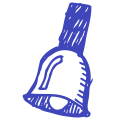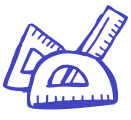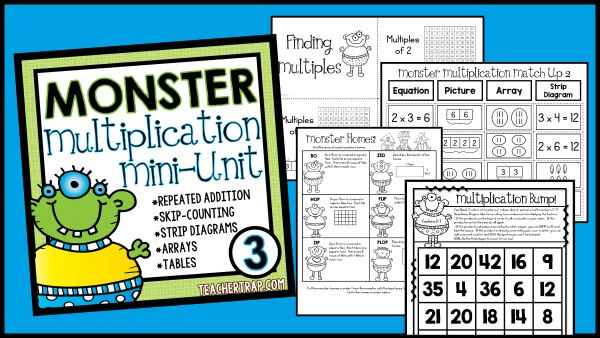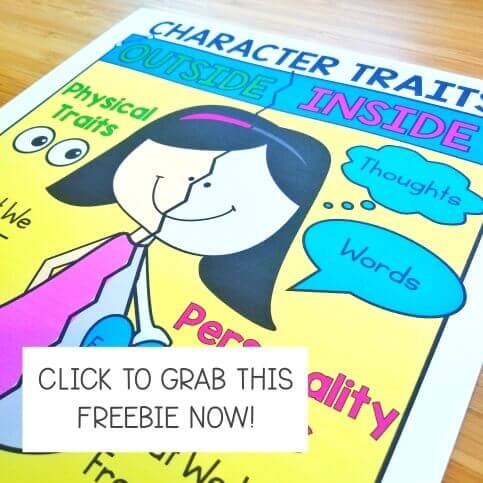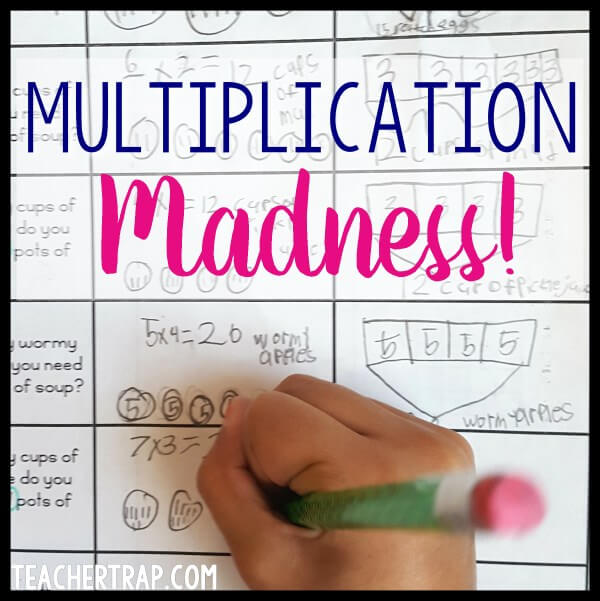
I love, love, love teaching multiplication! There are so many fun ways to make real-world connections and use hands-on exploration. In this post, I’d like to share a few of my favorite activities, some great resources, and my key multiplication anchor charts!
Introducing Multiplication
I like launching our multiplication unit by brainstorming ideas of things that come in groups. This helps students make the connection between multiplication and equal groups, and provides a handy reference for creating our own word problems later!

First, I send students off in small groups to brainstorm together and jot ideas on a paper after listing numbers 2 through 12. After groups have a chance to generate ideas, we meet together and students share their best ideas. Next, we use our new chart to act out a few word problems. I might say, “What if there were 5 kids? How many fingers would that be?” Students will stand and solve the problem by physically acting it out. Then I’ll show them how to write the multiplication number sentence and matching repeated addition.
Skip Counting
During the multiplication unit, we do A LOT of skip counting. We sing the multiples, chant the multiples, whisper the multiples, and rap the multiples. Students create their own skip counting booklet to have as a handy reference and I hang a chart in the room.

If you browse YouTube, you’ll find tons of skip counting videos and songs. My students love the videos created by Dr. DeMaio like this “3 Times Table Song” set to the tune of Uptown Funk! Plus, these videos make a great brain break and allow students to get up and move.
Multiplication Strategies
We also explore all kinds of multiplication strategies so that students can visualize and understand the meaning of multiplication. My kids spend a lot of time drawing out word problems on desks or personal whiteboards, physically acting out word problems, or using manipulatives (such as Cheese-Its!) to model problems.

As we try out different strategies, I add them to an anchor chart for reference. Below is the finished chart after we’d studied both multiplication and division. I wanted to highlight the various strategies and models they would be expected to understand so that students could make connections between the different strategies and between multiplication and division.
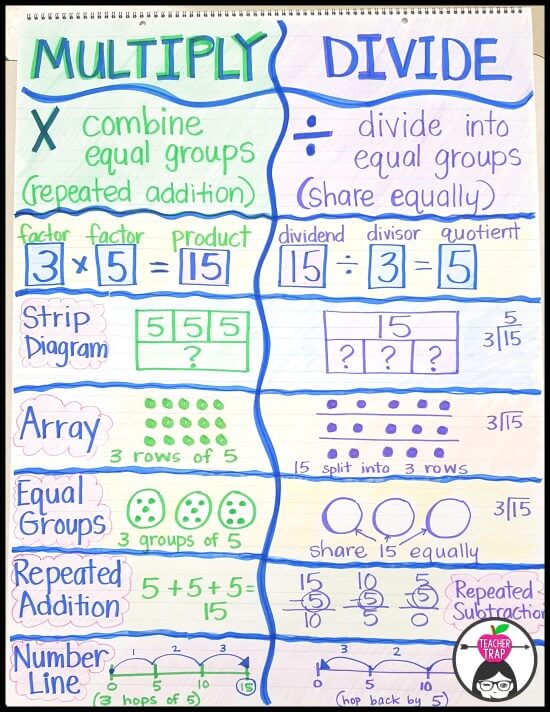
If you’re looking for more ideas, daily lessons, task cards, games and more, take a peek at my Monster Multiplication Mini-Unit. Kids love the monster-themed activities and teachers love the easy prep and challenging student tasks!
The kids play a lot of games and use manipulatives or dry-erase markers to “act out” the problems. This allows their partner to check their work and seems to keep the students engaged longer. (It also makes it easier for me to monitor understanding and fix up any confusions on the spot.)

Our anchor charts go up on the Math Wall during the unit and the key charts stay for longer periods of time. I see the kids referring to these charts all the time! We also create similar charts in their Math Journals so that even after the big charts come down, students can still flip back to reference them as needed.

Thanks so much for reading. Please share any other fun ideas for teaching multiplication in the comments below!


